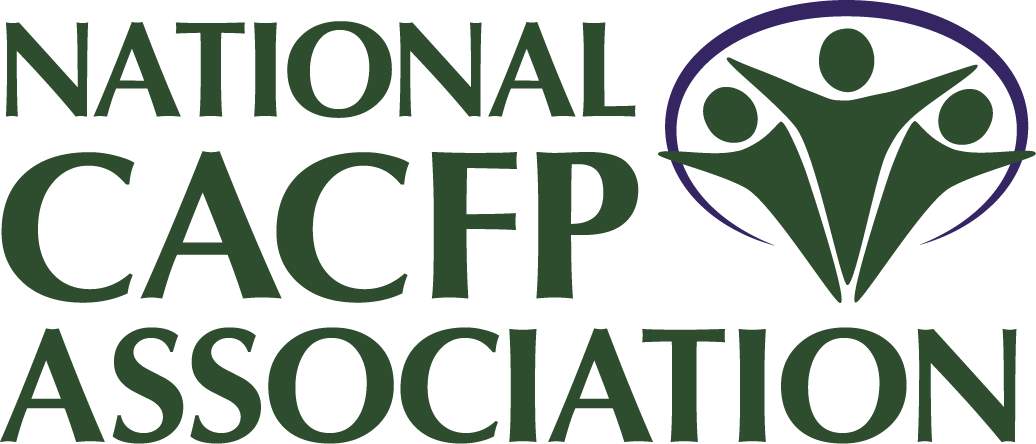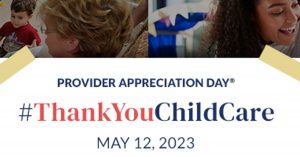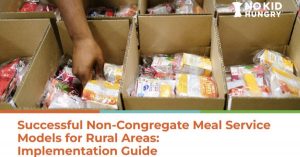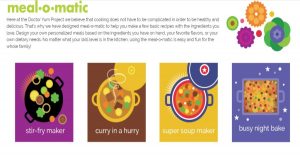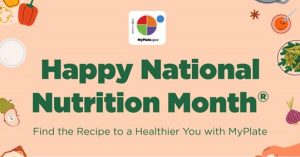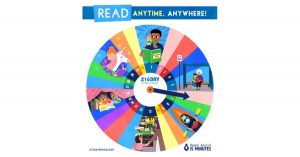Partner Resources
Nutrition Facts Labels and the CACFP
The Nutrition Facts label on food packages provides helpful information. It is a great tool to use when planning menus to determine creditable foods. Our partners at the Institute of Child nutrition created a resource focused on how to use the Nutrition Facts label to credit certain foods in the CACFP.
Read MoreHealth Equity: Build on Families’ Strengths
There are many ways grown-ups can help children take care of their physical, social, emotional, and spiritual well-being. Our partners at Sesame Street in Communities have created new resources to help all families build healthy habits as a foundation for lifelong well-being.
Read MoreProvider Appreciation Day
This year, provider appreciation day is May 12 and is all about saying “thank you“ to America’s child care providers. A simple gesture can mean the world to the workforce that keeps the rest of the workforce going. Our partners at Child Care Aware of America make it easy to say #ThankYouChildCare with their toolkit of resources in English and Spanish, and a few easy activities that make a provider feel appreciated.
Read MoreEmotional Well-being for Military and Caregiving Families
The pandemic disruption over the last three years has been challenging for all children and caregivers, with added stressors affecting their emotional well-being. This is especially true for military families and caregiving families who experience additional stress. That’s why our partners at Sesame Street in Communities have created 5 new videos highlighting simple strategies for self-care and emotional well-being that families can watch together.
Read MoreSuccessful Non-Congregate Meal Service Models for Rural Areas
In approved states beginning summer 2023, Summer Food Service Program (SFSP) and NSLP Seamless Summer Option (SSO) sponsors can operate non-congregate programs in rural communities without access to a congregate meal site. Our partners at No Kid Hungry have created a resource that outlines effective models for non-congregate meal service. Use their guide to find strategies and tactics to execute a successful non-congregate summer meals program in your rural community.
Read MoreHealthy Teams
Healthy teams are made up of all the people who work together to keep children growing healthy and strong, like caregivers, doctors, and teachers. Our partners at Sesame Street in Communities have created new materials that focus on the importance of healthy teams.
Read MoreEarth Day is Coming Up: How Can You Celebrate?
This year, Earth Day is on April 22nd! Celebrating Earth Day is a fun way to connect participants to their food and the environment, while encouraging them to try new things and get the nutrients their bodies need! There are a variety of ways to increase education and engagement and the Humane Society of the United States has drawn up a list of suggestions for festivities surrounding Earth Day/Week/Month.
Read MoreMeal-O-Matic
Cooking does not have to be complicated in order to be healthy and delicious. That’s why our partners at Dr. Yum Project have designed meal-o-matic to help you make a few basic recipes with the ingredients you love.
Read MoreMarch is National Nutrition Month
March is National Nutrition Month! This year, MyPlate’s theme is “Find the Recipe to a Healthier You,” which is an ode to healthy eating at every age. It’s never too early, or too late to eat healthfully!
Read More21-Day Read Aloud Challenge
How often do you read aloud to the children in your care? Reading aloud to young children, particularly in an engaging manner, promotes emerging literacy and language development and supports the relationship between child and parent/caregiver.
Read More